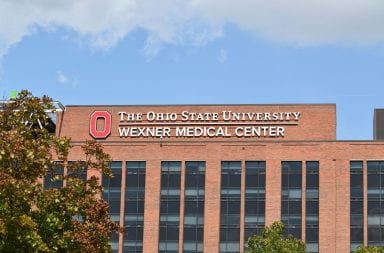Liquor in Ohio containing 21 percent or more of alcohol by volume hit a record high $509 million in sales in 2002, according to the Ohio Department of Commerce.
Sales per gallon last year were 8.7 million — an increase of 138,978 gallons, or about 1.6 percent from 2001.
The figures are based on sales from Ohio’s nearly 400 state-contracted liquor stores that are licensed to sell liquor with an alcohol content of at least 21 percent. Liquor is taxed $3.39 per gallon in addition to the varying sales tax each county imposes.
Matt Mullins, ODC spokesman, said the boost in liquor sales is an economic benefit for Ohio.
“Of all of the sales and taxes raised by the sale of spirituous liquor by consumers in Ohio, $194 million went back to the state to fund a variety of state services in 2002,” he said.
Mullins said the ODC differs from other state agencies because it actually turns a profit through the revenue it generates from liquor sales. He said about $13 million from Ohio’s 2002 liquor sales is committed to state agencies whose primary functions are either enforcing liquor laws or providing treatment to those suffering from alcohol dependency.
The Ohio Department of Alcohol and Drug Addiction Services, a state agency that certifies and oversees about 1,000 community-based treatment centers across the state, will receive $2.7 million from 2002 liquor sales for the rehabilitation of alcoholics, said Stacey Frohnapfel, ODADAS spokeswoman. In 2002, the agency cared for 43,379 Ohioans who listed alcohol as their primary drug of choice.
She said her agency’s share of the alcohol sales revenue represents just a fraction of its $120 million budget allotted solely for the treatment of addicts. Most of the funding ODADAS receives comes from federal grants, she said.
Frohnapfel said the state bestows only a marginal portion of the liquor sales revenue to alcohol treatment and enforcement agencies because Ohio sells liquor to make money — not to recuperate alcoholics.
“Adults should be able to make responsible decisions,” she said. “The average adult can live day in and day out without having an alcohol problem. If liquor sales go up, that’s great because we have more for treatment.”
The state does not give enough money to alcohol abuse treatment centers from the revenue it creates from the sale of liquor, said Paul H. Coleman, president of Maryhaven, an addiction and recovery care center in Columbus.
“I certainly respect the governor’s efforts to balance our budget in the state of Ohio, but I wish more of this money would go to addiction recovery care,” he said.
Coleman said the need for treatment increases during times of economic downturn, and beer and wine should be taxed — as liquor is — to create more funding for alcohol rehabilitation centers in Ohio.
He said Ohio officials should tax alcohol sales to raise money to treat alcoholics with the same vigor the state taxes gas prices to maintain highways.
Ohioans consume little alcohol compared to the rest of the nation, according to the ODC. Only Utah (49th) and West Virginia (50th) have lower per capita alcohol consumption rates. New Hampshire leads the nation in per capita liquor use.


